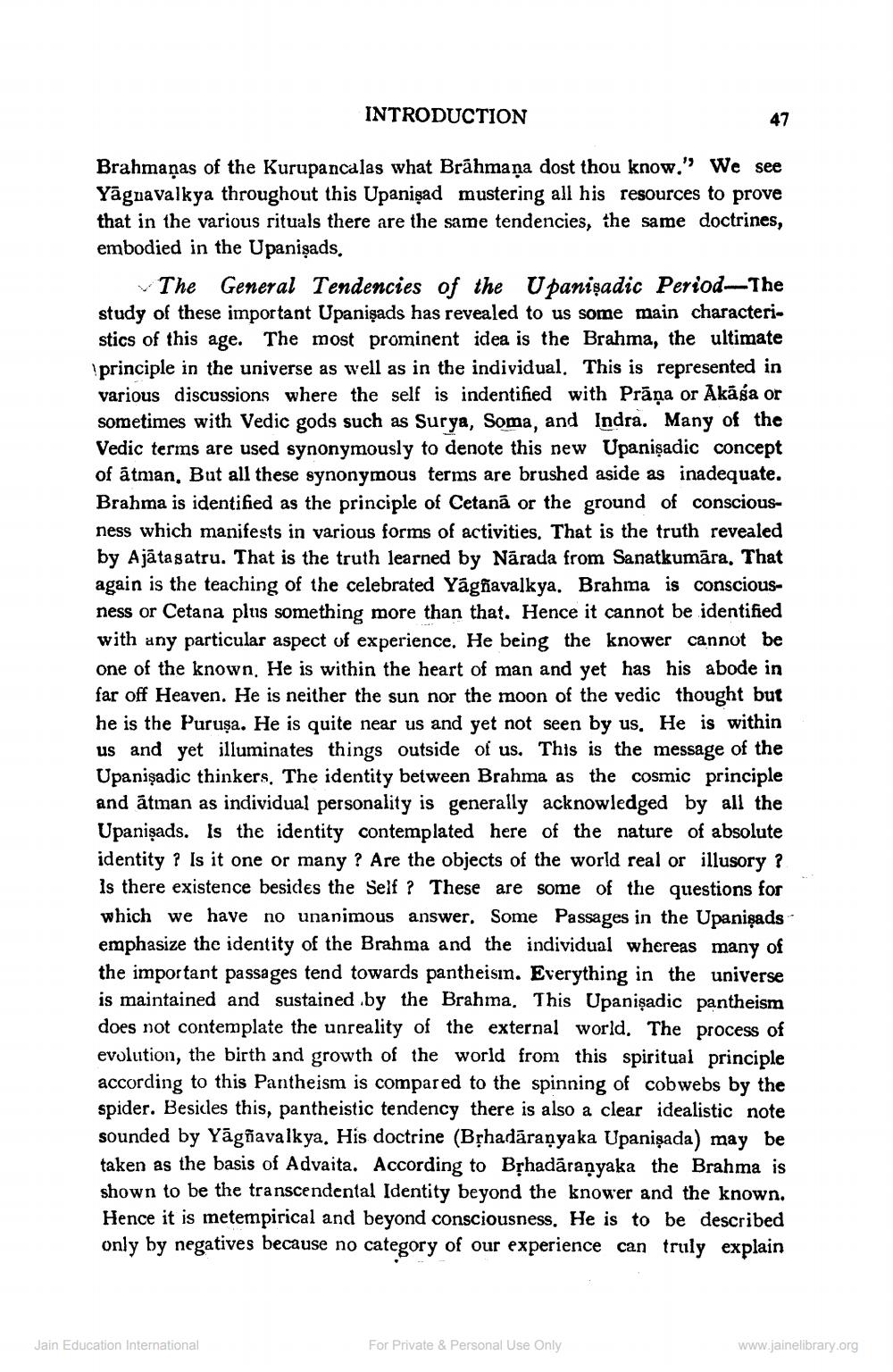________________
INTRODUCTION
Brahmaņas of the Kurupancalas what Brāhmaṇa dost thou know.' We see Yagnavalkya throughout this Upanişad mustering all his resources to prove that in the various rituals there are the same tendencies, the same doctrines, embodied in the Upanişads.
The General Tendencies of the Upanişadic Period—The study of these important Upanişads has revealed to us some main characteristics of this age. The most prominent idea is the Brahma, the ultimate principle in the universe as well as in the individual. This is represented in various discussions where the self is indentified with Prāņa or Akāģa or sometimes with Vedic gods such as Surya, Soma, and Indra. Many of the Vedic terms are used synonymously to denote this new Upanişadic concept of atman. But all these synonymous terms are brushed aside as inadequate. Brahma is identified as the principle of Cetanā or the ground of consciousness which manifests in various forms of activities. That is the truth revealed by Ajātasatru. That is the truth learned by Nārada from Sanatkumāra. That again is the teaching of the celebrated Yágñavalkya. Brahma is consciousness or Cetana plus something more than that. Hence it cannot be identified with any particular aspect of experience. He being the knower cannot be one of the known. He is within the heart of man and yet has his abode in far off Heaven. He is neither the sun nor the moon of the vedic thought but he is the Puruşa. He is quite near us and yet not seen by us. He is within us and yet illuminates things outside of us. This is the message of the Upanişadic thinkers. The identity between Brahma as the cosmic principle and átman as individual personality is generally acknowledged by all the Upanişads. is the identity contemplated here of the nature of absolute identity ? Is it one or many ? Are the objects of the world real or illusory? Is there existence besides the Self? These are some of the questions for which we have no unanimous answer. Some Passages in the Upanişads emphasize the identity of the Brahma and the individual whereas many of the important passages tend towards pantheisın. Everything in the universe is maintained and sustained by the Brahma. This Upanişadic pantheism does not contemplate the unreality of the external world. The process of evolution, the birth and growth of the world from this spiritual principle according to this Pantheism is compared to the spinning of cobwebs by the spider. Besides this, pantheistic tendency there is also a clear idealistic note sounded by Yagñavalkya. His doctrine (Brhadāraṇyaka Upanişada) may be taken as the basis of Advaita. According to Brhadāraṇyaka the Brahma is shown to be the transcendental Identity beyond the knower and the known. Hence it is metempirical and beyond consciousness. He is to be described only by negatives because no category of our experience can truly explain
Jain Education International
For Private & Personal Use Only
www.jainelibrary.org




